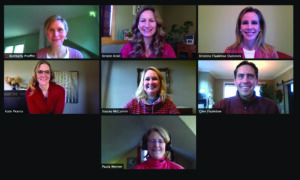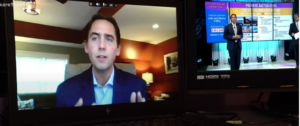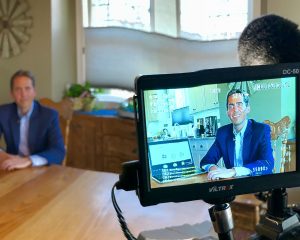Dec 8, 2020 | Uncategorized
Tap into the collective expertise of our Fladeboe team! How can your nonprofit share your mission, engage your donors, and meet revenue goals into the coming year, with so much unknown about how we will gather in the future? We have some answers.
On December 15th at noon CST, join us for an interactive webinar to learn our key takeaways from virtual events, our strategic plans for hybrid, and what we see for the future of special event fundraising. Hint: It’s not a replay of your 2019 gala.
Register for our Webinar

Date: Tuesday, December 15, 2020
Time: 12:00 pm – 1:00 pm CST (including lots of time for your questions!)
Presenters: Kimberly Proffitt, Kristin Kroll, Kristine Fladeboe Duininck, Kate Pearce, Stacey McCurnin, Glen Fladeboe and Paula Werner
Cost: Free
Space is limited and registration is required so reserve your spot today. Can’t make the live event? Register now and watch the session at your convenience, after December 15th.
Like us on Facebook and follow us on LinkedIn for regular updates on what’s new in fundraising events and campaigns.
Nov 12, 2020 | Uncategorized

After partnering with over 100 nonprofits since March, it’s clear that virtual events are working. Watch Glen Fladeboe, Principal Partner at Fladeboe Advancement, in this October 2020 KARE 11 News feature about how donors are responding to this new fundraising format.
Link: https://kare11.com/embeds/video/89-c9fade05-a959-462c-bc9a-fc54817636e8/iframe?jwsource=cl
Apr 3, 2020 | Uncategorized

Virtual events are quickly becoming a popular tool for many nonprofits. Fladeboe Advancement has developed the best practices in virtual event fundraising and is helping a wide range of nonprofit organizations create a successful virtual event.
In this KARE 11 news feature, watch Glen Fladeboe, Principal Partner at Fladeboe Advancement, explain how one organization quickly – and successfully – made the change.
Dec 5, 2019 | Uncategorized

Glen Fladeboe, Angela Davis and Sara Lueben at MPR
What is the most powerful tool in an event fundraiser’s tool box? How are younger donors participating in giving?
Glen Fladeboe, Principal Partner of Fladeboe Advancement, and Sara Lueben, Grantmaking Chair at Fourth Generation and the Community Engagement Coordinator at NorthPoint Health and Wellness Center, Inc., sat down with Angela Davis of Minnesota Public Radio (MPR) News to discuss fundraising strategies and how giving is changing in the Twin Cities and beyond. Glen shares insights and stories from recent charity gala events and Sara shares how Millennials through Generation-X are getting involved in giving.
Listen here to learn more about the strong culture of giving in Minnesota and how the actions of one will influence others.
Aug 7, 2019 | Uncategorized

In Part II of this article series, we continue looking at insights from Giving USA 2019, a study of US charitable giving in 2018. (Read Part I.)
1. What you heard: Nine of eleven recipient sub-sectors saw giving fall or stay flat.
What you might not have heard: The two sub-sectors with growth (International Affairs and Environment/Animals) also have the highest percentage of online giving. Some speculate an embrace of technology is one factor in the growth. It can make giving easier, appeal to a younger set of donors, and allow a nonprofit to be nimble in its fundraising.
Our tip: Evaluate the “journey” your donors take in making a gift, especially online. Is the process easy? Do donors feel appreciated? Do you report back on outcomes?
2. What you heard: Giving as a percentage of GDP (gross domestic product) remained flat at 2.1%. It has hovered around 2% for more than 20 years.
What you might not have heard: Giving as a percentage of disposable personal income (DPI) also remained flat (1.9%) even though DPI increased by 5% in 2018. The share of wallet for “traditional” charitable giving (to a 501(c)3) isn’t going
up even with more in our wallets. This may signal a change in how Americans view “giving.”
Our tip: Donor stewardship must be a top priority for nonprofits. Donors could spend their disposable income on any number of things, and they choose your organization. Show them you are truly grateful and they are making a difference.
3. What you heard: The fundraising landscape is changing.
What you might not have heard: Some things we can’t control, but we can keep up with changes to ensure giving stays strong.
Our tips:
-
-
-
- Focus on retention! With fewer households giving, acquisition is more challenging. Building relationships is always a solid strategy.
- Talk to donors about how policy is affecting them – don’t assume you know.
- Use strategies such as recurring giving to diversify revenue streams. Build a pipeline for the future by engaging younger donors, even if they aren’t giving yet.
- Continue to study trends in giving, such as demographic shifts, changes in giving strategies and vehicles, and the influence of technology. Adapt your fundraising accordingly.





